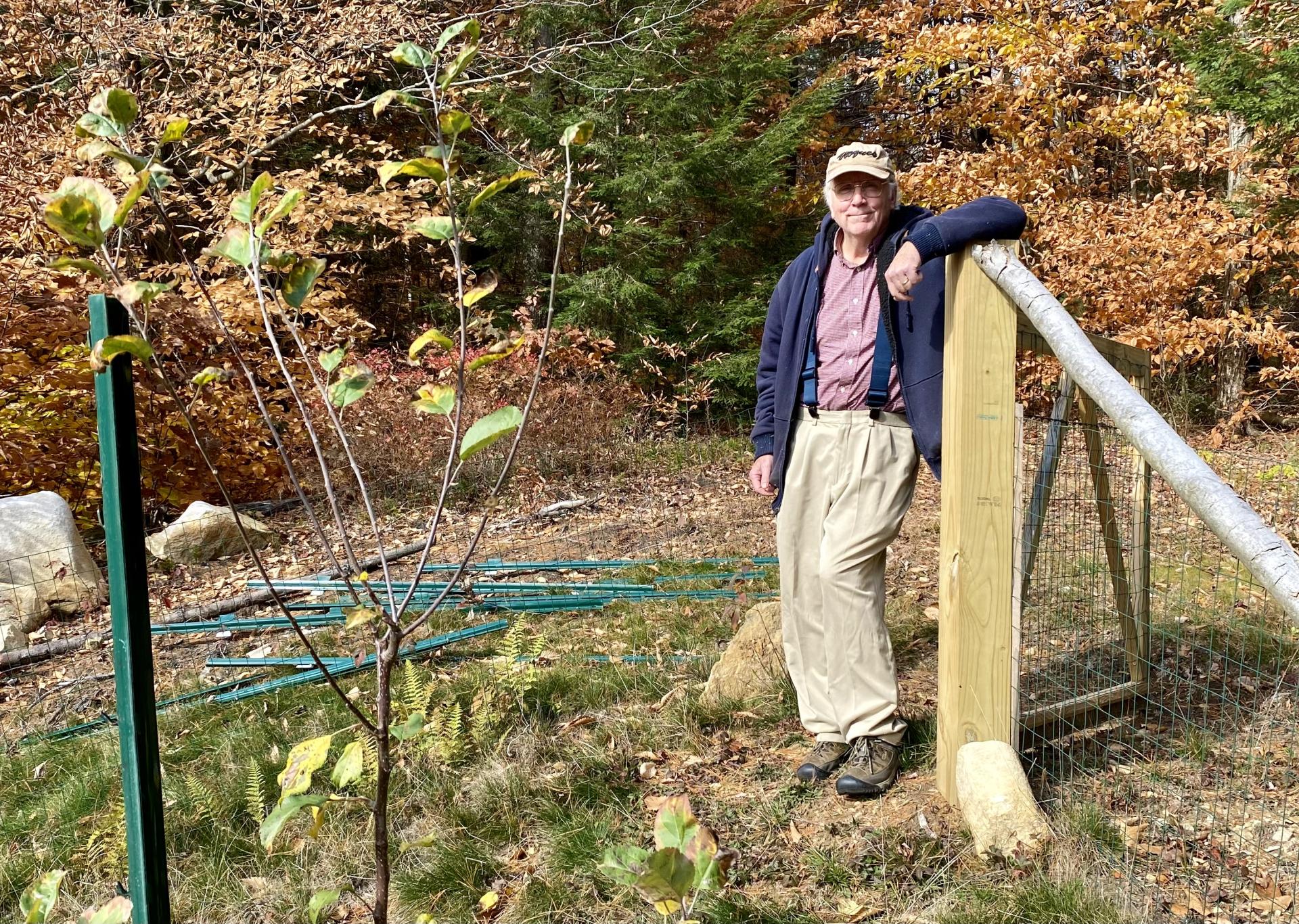You are here
Be a Better Gardener: Staying True to Our Cider Tradition
Be a Better Gardener: Staying True to Our Cider Tradition
By Thomas Christopher
Thirty-five years ago, a treasure hunt in the New York Botanical Garden library paid off big time for me. That library houses one of the greatest collections of botanical and horticultural literature in the world, and a sympathetic librarian had given me access to “the stacks,” the back rooms where books are stored. I was working my way randomly down the aisles when I pulled from the shelf a small booklet of 119 pages published in 1911: The Cider Maker’s Hand Book, by J. M. Trowbridge.
This was not, as I at first supposed, a book about the sweet beverage you find at roadside stands in the Fall. When I began reading the booklet, I quickly learned that for Trowbridge and his contemporaries, “cider” automatically meant a fermented beverage, what we would today call “hard cider.”
The book soon immersed me in a discussion of tools and techniques, as well as tips on the most suitable apple varieties. The old-time makers did not, I learned, rely on the sort of sweet, mild fruits we currently stuff into lunch boxes. European cider makers classically use apple varieties developed especially for cider making, many of which are distasteful when eaten right off the tree. American cider makers more often relied on dual-purpose fruits, such as Baldwin, an heirloom apple still found in some New England orchards. Baldwins are pleasant when eaten out of hand, but are assertive enough that when their sweetness is eliminated by fermentation, they still present a complex and delicious flavor profile. American cider makers also tended to rely on blends, with different apples supplying different qualities. Golden Russet, or Roxbury Russet, might be included to add sprightliness to the result, and crab apples were often tossed in to contribute tartness, tannin and a touch of bitter.
My wife, Suzanne, and I began to scavenge apples and borrow the use of a small apple crusher and hydraulic cider press at a farm to make our own cider for fermentation. I also began to meet other cider makers who were reviving hard cider as a celebration of the Northeastern autumn. For example, I got to know Stephen Wood and Louisa Spencer of Farnum Hill Cider in Lebanon, N.H., who had regrafted the apple trees in their orchard to classic cider apples of English as well as American origin, and who were producing hard cider blends as complex and delicious as any wine you might find at your local liquor store. Other pioneers included Judith and Terry Maloney of West County Cider who were working with an orchard near their home in Colrain, Mass., to produce varietal ciders based on pressings of a single apple variety. A renaissance of hard cider making had begun.
Many of the brands that have emerged are quite good. A couple of negative factors, though, have dogged contemporary American cider making. One is a dearth of good, grown-for-the-purpose cider apples. You can make hard cider from left over dessert apples, just as you can make wine from Concord grapes. The results in both cases, however, are poor. Cider makers using this inferior fruit typically compensate for the resulting lack of flavor by dosing their product with additives such as cranberry juice or spices such as ginger. I’ve found these make-shifts to be heavy on sugar and lacking in subtlety. The best that can be said for them is that if consumed in sufficient quantity, they will make you drunk.
Another problem has been the recent fashion for “natural” ciders. Many makers decided a few years ago that rather than inoculating the freshly pressed juice with a selected strain of yeast, they would let wild yeasts naturally present on the apples dominate the fermentation process. The idea seems to be that this more “natural” approach somehow makes the cider a better reflection of its terroir. In my experience, though, the result is far more likely to be a murky, vinegary beverage that varies drastically from batch to batch.
Me, I’ll stick to Farnum Hill’s carefully choreographed confections, which are widely distributed now and can also be purchased by mail order. Or I’ll drink my own, less sophisticated but honest cider. We’ve got 10 gallons of a Baldwin/Russet blend (inoculated with a champagne yeast) fermenting in our basement right now that my wife and I will bottle next month. And last spring we planted our own little orchard of 20 dwarf cider apples. We are DIYers, but we also believe in doing it right.
Be-a-Better-Gardener is a community service of Berkshire Botanical Garden, located in Stockbridge, Mass. Its mission, to provide knowledge of gardening and the environment through a diverse range of classes and programs, informs and inspires thousands of students and visitors each year. Thomas Christopher is a volunteer at Berkshire Botanical Garden and is the author or co-author of more than a dozen books, including Nature into Art and The Gardens of Wave Hill (Timber Press, 2019). He is the 2021 Garden Club of America's National Medalist for Literature, a distinction reserved to recognize those who have left a profound and lasting impact on issues that are most important to the GCA. Christopher’s companion broadcast to this column, Growing Greener, streams on WESUFM.org, Pacifica Radio and NPR and is available at berkshirebotanical.org/growinggreener.
Help Our Garden Grow!
Your donation helps us to educate and inspire visitors of all ages on the art and science of gardening and the preservation of our environment.
All donations are 100 percent tax deductible.


